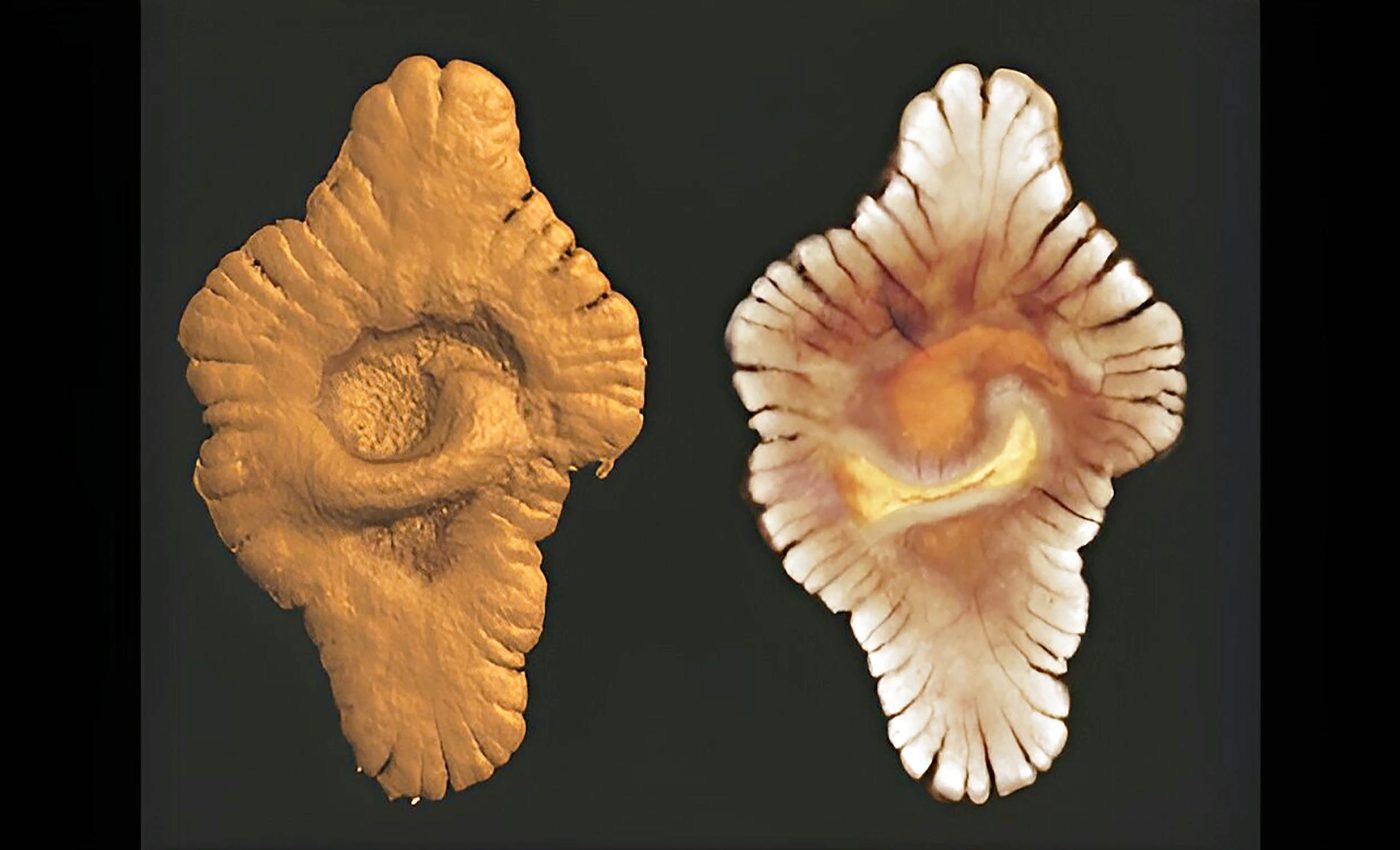
Is this a fossil? If so, complex life on Earth emerged 1.5 billion years earlier
For most of Earth’s first three billion years, oceans brimmed with single‑celled microbes that shuffled along at a slow biochemical pace — life, but not complex.
It lacked ample phosphorus, the nutrient every cell needs for DNA assembly, membrane stability, and ATP energy swaps. Rivers dripped only trace amounts of phosphorus into seawater, holding biology to pint‑size proportions and throttling evolutionary experiments in body size.
Evidence for that long famine sits in ancient mudstones, which contain scant phosphate minerals compared with younger rocks.
Productivity lagged; oxygen production stayed low; food chains hid in microscopic layers. When phosphorus finally surged, life gained the building blocks to try larger, more complex designs.
Volcanic chaos and complex life
About 2.1 billion years ago, the Congo and São Francisco continental blocks slammed together.
Their collision squeezed faults, stirred magma, and unleashed underwater volcanoes across a shallow inland sea now preserved as the Francevillian sub‑basin in Gabon.
Eruptions pumped phosphorus‑rich fluids straight into the water and walled the basin off from the wider ocean.
Cyanobacteria thrived in this enclosed lagoon, releasing oxygen and burying carbon as fast as nutrients arrived.
The chemical bloom raised local energy budgets many times over, creating conditions that favored bigger bodies and cooperative cell assemblies rather than lone bacterial drifters.
Fossil discovery challenges timeline
Black shales from the basin hold disc‑shaped, ribbon‑shaped, and leaf‑shaped impressions up to six inches long – giants for their day.
Their regular outlines and clustering hint at biological growth rather than odd mineral concretions. They appear in the same sedimentary layers that show the phosphorus spike, linking anatomy to chemistry.

If these forms truly represent multicellular life, they push the arrival of complex organisms back by roughly 1.5 billion years.
That jump rewrites the evolutionary timeline, showing that animals were not the first to test large size; earlier prototypes surfaced when nutrients and oxygen briefly aligned.
Chemistry meets biology
The new work, led by Cardiff University geobiologist Dr. Ernest Chi Fru, pairs detailed rock chemistry with fossil mapping.
“The availability of phosphorus in the environment is thought to be a key component in the evolution of life on Earth, especially in the transition from simple single‑celled organisms to complex organisms like animals and plants,” Dr. Chi Fru explained.
“We already know that increases in marine phosphorus and seawater oxygen concentrations are linked to an episode of biological evolution around 635 million years ago. Our study adds another, much earlier episode into the record, 2.1 billion years ago.”
Digging into the basin’s history, Dr. Chi Fru explained that the volcanic activity following the collision of continental blocks likely isolated the basin from the global ocean, creating a nutrient-rich inland sea.
This stable environment supported abundant cyanobacterial photosynthesis, which in turn oxygenated the water and generated enough energy to support larger, more complex life forms like those seen in the fossils from the period.
Why the complex life experiment stalled
Outside the Francevillian lagoon, oceans still lacked phosphorus and carried little oxygen. Larger creatures would have struggled in those harsh surroundings.
The basin’s shoreline barrier turned the ecosystem into a biological bubble; when volcanic vents cooled and nutrient flow faded, conditions reverted and the macro‑organisms vanished.
Their failure to spread shows that evolution tests possibilities whenever resources allow, but those trials can fizzle if the wider planet remains hostile.
Complexity needs both innovation and the freedom to roam – something the early Proterozoic world could not yet provide.
Two steps to modern animals
Researchers see a “two‑step” path. The Francevillian pulse marks step one, following the first known rise in atmospheric oxygen.
Step two arrived nearly 1.5 billion years later, when another oxygen surge met a more sustained supply of nutrients during the Ediacaran period.
That tandem lifted complex life beyond isolated pockets, setting the stage for the Cambrian explosion and the diverse animals that populate Earth now.
The record hints that ample phosphorus may be as critical as oxygen for forging ecosystems full of active, energy‑demanding organisms. Without both factors in play, biology tends to stay microscopic.
Why does any of this matter?
Astrobiologists comb exoplanet atmospheres for oxygen because it signals possible photosynthesis. The Francevillian story suggests they should also weigh a planet’s phosphorus cycle.
A world awash in oxygen but starved of phosphate could linger in a microbial phase for eons. Conversely, tectonic quirks that sprinkle oceans with phosphate might jump‑start evolutionary leaps.
Phosphorus, then, is more than fertilizer for terrestrial crops. It is a potential cosmic throttle on complexity, deciding whether life remains small or reaches for new biological heights.
—–
The full study was published in the journal Precambrian Research.
Image Credit: Professor Abderrazzak El Albani of the University of Poitiers, France
—–
Like what you read? Subscribe to our newsletter for engaging articles, exclusive content, and the latest updates.
Check us out on EarthSnap, a free app brought to you by Eric Ralls and Earth.com.
—–













